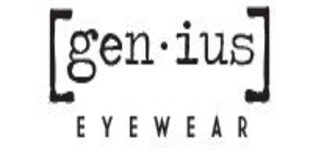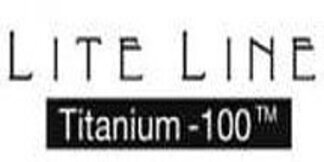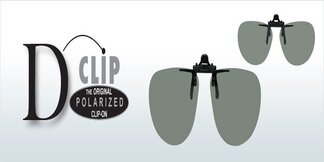High Index Lens Replacement

VS Eyewear is proud to offer a variety of High Index Lens Replacement for those with strong prescriptions. High index lens replacement are effective in correcting most refractive errors including nearsightedness, farsightedness, presbyopia and Astigmatism. Media has promoted the myth, showing bespectacled people wearing thick glasses to make their eyes appear big and buggy. The technology of today has dispelled this myth. High-index lenses are available in a wide range of frames and can be used to accommodate numerous prescriptions with a broad range of tints and coatings.
High Index Lens Replacement – What they are and How to Use Them
The term “high index” refers the refractive indices of lenses. The refractive lens index measures the lens’s ability bend light. The higher the index, the better the lens will be at correcting vision and bending light.
They are also very powerful. High-index lenses can correct vision problems that are more severe while taking up less space than other eyeglasses.
The higher the refractive index of a lens, the stronger the prescription without needing to add thickness.
What prescription strengths require high-index lenses?
High-index lenses are recommended for eye prescriptions between +/-4.00 to +/-8.00. High-index lenses are recommended for those with prescriptions of +/-4.00 to +/-8.00. We recommend 1.67 lenses for those with prescriptions in between.
High-index lenses are not noticeable by people with low prescription strengths. Your optometrist will be able to determine what is best for your prescription.
What are the advantages of high-index lenses?
- They are thinner, lighter and less noticeable within frames. Unlike thicker lenses which may protrude. Low-index lenses may also enlarge or reduce the size of your eyes. This is less likely to happen with high-index lens. .
- They are versatile. You can choose from high-index lenses that are single vision or progressive. You can even get light responsive. High-index lenses can be ordered that filters blue light. If you are getting sunglasses, high-index polarized lenses are also available. High-index lenses are a great option for customizing your prescription lenses.
- These lenses fit into most frames. You can choose from a wide range of frames styles even if your prescription is higher. We recommend selecting a frame which centers your eyes behind the lenses to reduce your lens thickness. This is even more important if your prescription is strong! The larger the frame, the thicker the lenses (regardless of refractive index).
- They are comfortable. High index lenses will not sit heavy on your nose or ears and will be less likely to slide down compared with thicker lenses.
What are the disadvantages of high-index lenses?
- They are not as resistant to impact as other lenses. They’re not the best option for children, or those who play high-contact sports. High-index lenses can be slightly more fragile than other lenses.
- High-index lenses are more expensive than conventional lenses. Because of their materials and manufacturing processes, they can increase the cost of your eyewear. High-index lenses can cost hundreds of dollars extra. Ordering high-index lenses at Warby Parker will cost you between $50 and $150.
- They are more reflective than any other lens. They are more reflective than other lenses. This can cause distractions in bright environments. This can make driving and seeing at night more difficult. Antireflective coating for high index lenses is therefore essential. All of ours are already coated with this coating.
Each high-index lens has its own unique benefits. Explore them further:
These lenses have a 1.67 index and are a popular choice for people with high to moderate prescriptions. These lenses are thinner, lighter and offer improved comfort and aesthetics. There are many lens options available, including clear, sunglass tints in Polarized Gray or Brown, as well as transition lenses, both Signature and Xtractive. This allows you to customize the eyewear according to your style and functionality. They minimize distortions and offer clear vision. These lenses are a great option for many people because they balance affordability, lens thickness and weight.
These lenses have a 1.74 index and are for people with high prescriptions. These are the thinnest, lightest high index lenses and most comfortable plastic lenses available. Choose the type of lens that best suits your vision and style requirements. You can choose from clear, transitions or sunglass tints. These lenses provide excellent optical performance and minimize aberrations, delivering clear vision for wearers who have strong prescriptions.
VS Eyewear understands that everyone has different visual requirements. We offer a wide range of high index lens replacements to suit your prescription, budget, and preferences. We also offer a full range of high index glass lenses for existing glasses.

VS Eyewear is proud to offer a variety of High Index Lens Replacement for those with strong prescriptions. High index lens replacement are effective in correcting most refractive errors including nearsightedness, farsightedness, presbyopia and Astigmatism. Media has promoted the myth, showing bespectacled people wearing thick glasses to make their eyes appear big and buggy. The technology of today has dispelled this myth. High-index lenses are available in a wide range of frames and can be used to accommodate numerous prescriptions with a broad range of tints and coatings.
High Index Lens Replacement – What they are and How to Use Them
The term “high index” refers the refractive indices of lenses. The refractive lens index measures the lens’s ability bend light. The higher the index, the better the lens will be at correcting vision and bending light.
They are also very powerful. High-index lenses can correct vision problems that are more severe while taking up less space than other eyeglasses.
The higher the refractive index of a lens, the stronger the prescription without needing to add thickness.
What prescription strengths require high-index lenses?
High-index lenses are recommended for eye prescriptions between +/-4.00 to +/-8.00. High-index lenses are recommended for those with prescriptions of +/-4.00 to +/-8.00. We recommend 1.67 lenses for those with prescriptions in between.
High-index lenses are not noticeable by people with low prescription strengths. Your optometrist will be able to determine what is best for your prescription.
What are the advantages of high-index lenses?
- They are thinner, lighter and less noticeable within frames. Unlike thicker lenses which may protrude. Low-index lenses may also enlarge or reduce the size of your eyes. This is less likely to happen with high-index lens. .
- They are versatile. You can choose from high-index lenses that are single vision or progressive. You can even get light responsive. High-index lenses can be ordered that filters blue light. If you are getting sunglasses, high-index polarized lenses are also available. High-index lenses are a great option for customizing your prescription lenses.
- These lenses fit into most frames. You can choose from a wide range of frames styles even if your prescription is higher. We recommend selecting a frame which centers your eyes behind the lenses to reduce your lens thickness. This is even more important if your prescription is strong! The larger the frame, the thicker the lenses (regardless of refractive index).
- They are comfortable. High index lenses will not sit heavy on your nose or ears and will be less likely to slide down compared with thicker lenses.
What are the disadvantages of high-index lenses?
- They are not as resistant to impact as other lenses. They’re not the best option for children, or those who play high-contact sports. High-index lenses can be slightly more fragile than other lenses.
- High-index lenses are more expensive than conventional lenses. Because of their materials and manufacturing processes, they can increase the cost of your eyewear. High-index lenses can cost hundreds of dollars extra. Ordering high-index lenses at Warby Parker will cost you between $50 and $150.
- They are more reflective than any other lens. They are more reflective than other lenses. This can cause distractions in bright environments. This can make driving and seeing at night more difficult. Antireflective coating for high index lenses is therefore essential. All of ours are already coated with this coating.
Each high-index lens has its own unique benefits. Explore them further:
These lenses have a 1.67 index and are a popular choice for people with high to moderate prescriptions. These lenses are thinner, lighter and offer improved comfort and aesthetics. There are many lens options available, including clear, sunglass tints in Polarized Gray or Brown, as well as transition lenses, both Signature and Xtractive. This allows you to customize the eyewear according to your style and functionality. They minimize distortions and offer clear vision. These lenses are a great option for many people because they balance affordability, lens thickness and weight.
These lenses have a 1.74 index and are for people with high prescriptions. These are the thinnest, lightest high index lenses and most comfortable plastic lenses available. Choose the type of lens that best suits your vision and style requirements. You can choose from clear, transitions or sunglass tints. These lenses provide excellent optical performance and minimize aberrations, delivering clear vision for wearers who have strong prescriptions.
VS Eyewear understands that everyone has different visual requirements. We offer a wide range of high index lens replacements to suit your prescription, budget, and preferences. We also offer a full range of high index glass lenses for existing glasses.
Most high-index lenses are made from plastics. The lens material undergoes a specialized manufacturing process to ensure a high index of refraction. There are glass high-index lenses as well, but they’re not prescribed as often.
Eye prescriptions of +/-4.00 and higher can benefit from high-index lenses. We recommend 1.67 high-index lenses for people with prescriptions between +/-4.00 and +/-8.00, and 1.74 high-index lenses for people with prescriptions +/-8.00 and higher.
High-index lenses are typically thinner and can be lighter in comparison to other lens types. For example, a standard plastic lens (with a refractive index around 1.50) and a 1.67 high-index lens might have the same prescription, but the high-index lens could be up to 30% thinner.
The refractive index for conventional plastic lenses hovers around 1,50. For glass lenses, the index is about 1.52. The high-index lenses are all thinner than the conventional lenses. However, their thickness will depend on the material they are made of, the prescription they have, and the frame that they will be used in.
The name of high-index lenses will usually include the index of refraction, so that you can estimate how thin they may be. High-index lenses are usually characterized by refractive indexes between 1.61 and 1.67.
Polycarbonate lenses are made from impact-resistant plastic with a refractive index of 1.59. This refractive index makes them thinner than standard plastic lenses, but not as thin as high-index lenses with a higher index of refraction. For example, our 1.67 high-index lenses are about 20% thinner than our polycarbonate lenses.
1.74 high-index lenses are up to 10% thinner than 1.67 high-index lenses. Both have a high index of refraction and can accommodate strong prescriptions, but 1.74 high-index lenses are for especially strong ones: +/-8.00 or higher.
Yes, sunglasses can have high-index lenses. High-index lenses can be polarized or have a mirrored coating, so you can style your prescription sunglasses to your heart’s content.
So: Should you get high index lenses? If their aesthetics appeal to you, high-index lenses are a great way to get the thinnest lenses for a high prescription. When compared to lenses with a lower index of refraction, their benefits outweigh the bump in cost for many wearers.
































































